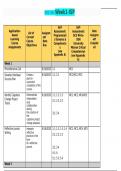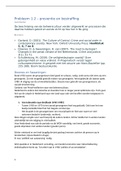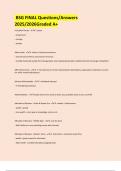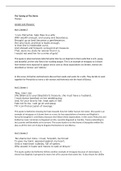CHAPTER # 13
CURRENT ELECTRICITY
Q1: Define Current.
CURRENT
“Amount of charge passes through a conductor per unit time is called current”.
OR
“Flow of charge per unit time in a conductor is known as “current”
Formula:
If “Q” coulomb charge passes through a wire in time “t” seconds, then current “I” can be
defined by the following formula as:
𝑸
𝑰=
𝒕
Unit:
S.I unit of current is ampere (A) which is equal to coulomb/sec.
Direction of current:
There are two direction of current:
1- Electronic current
2- Conventional current
1- Electronic current:
The direction of flow of negative charges (electrons) through a
conductor is referred as “Electronic current”.
This current is always taken from negative to positive terminal
of battery.
2- Conventional current:
The direction in which positive charges move in a circuit is
referred as “Conventional current”.
This current is always taken from positive to negative terminal
of battery.
We always consider the direction of conventional
current while studying.
Q2: Why does current is not measured without applying potential difference across the
conductor while charges (electron) move within the conductor with thermal speed?
ANSWER:
There is large number of free electrons present in a conductor which move with thermal
speed (speed due to thermal energy) in all directions of a conductor so that the net
movement of charges or electrons in a particular direction is zero, that’s why current is not
measured in this situation.
, Q3: Define drift speed or drift velocity.
DRIFT VELOCITY
“The velocity of electrons within the conductor when potential difference or external
electric field is applied across the end of the conductor is known as drift velocity”.
Explanation:
When potential difference or external electric field is applied across the end of a conductor,
the electrons are accelerated from negative to positive ends of a conductor. These electrons
collide with the atoms during their motion, so that kind of velocity is referred as
drift velocity. It is the order of 0.01 m/s.
Expression for drift velocity: (Optional)
Consider a conductor of length “l” and of cross sectional area “A” which is connected to the
terminal of battery as shown in the diagram. According to definition of current,
𝑸
𝑰=
𝒕
If “N” electrons pass through the conductor in time “t” then:
𝑵𝒆
𝑰= − − − − − (𝟏) ∵ {𝑸 = 𝑵𝒆}
𝒕
Here we define number of electrons per unit volume which is also called number density (n)
as:
𝑵 𝒏𝒐. 𝒐𝒇 𝒆𝒍𝒆𝒄𝒕𝒓𝒐𝒏𝒔
𝒏= =
𝑨𝒍 𝒗𝒐𝒍𝒖𝒎𝒆 𝒐𝒇 𝒄𝒐𝒏𝒅𝒖𝒄𝒕𝒐𝒓
Here “Al” represents the volume of conductor.
𝒏𝑨𝒍=𝑵
Now equation (1) may be written as:
𝒏𝑨𝒍𝒆
𝑰=
𝒕
𝒍
𝑰 = 𝒏 𝑨( )𝒆
𝒕
𝑺 𝒍
𝑰 = 𝒏 𝑨 𝒗𝒅 𝒆 ∵ {𝒗 = , 𝒗𝒅 = }
𝒕 𝒕
𝑰
𝒗𝒅 =
𝒏𝑨𝒆
Q4: state and explain Ohm’s law. [1995, 2000, 02 PM, 03 PM, 04, 06, 07, 14, 18]
OHM’S LAW
Statement:
“At the same physical state of a conductor the current passes through a conductor (I) is
directly proportional to the potential difference (V) applied across it”.
Mathematically:
𝑰∝𝑽
𝑰 = 𝑲𝑽 − − − − − (𝟏)
Here, “K” is constant called conductance of conductor.
CURRENT ELECTRICITY
Q1: Define Current.
CURRENT
“Amount of charge passes through a conductor per unit time is called current”.
OR
“Flow of charge per unit time in a conductor is known as “current”
Formula:
If “Q” coulomb charge passes through a wire in time “t” seconds, then current “I” can be
defined by the following formula as:
𝑸
𝑰=
𝒕
Unit:
S.I unit of current is ampere (A) which is equal to coulomb/sec.
Direction of current:
There are two direction of current:
1- Electronic current
2- Conventional current
1- Electronic current:
The direction of flow of negative charges (electrons) through a
conductor is referred as “Electronic current”.
This current is always taken from negative to positive terminal
of battery.
2- Conventional current:
The direction in which positive charges move in a circuit is
referred as “Conventional current”.
This current is always taken from positive to negative terminal
of battery.
We always consider the direction of conventional
current while studying.
Q2: Why does current is not measured without applying potential difference across the
conductor while charges (electron) move within the conductor with thermal speed?
ANSWER:
There is large number of free electrons present in a conductor which move with thermal
speed (speed due to thermal energy) in all directions of a conductor so that the net
movement of charges or electrons in a particular direction is zero, that’s why current is not
measured in this situation.
, Q3: Define drift speed or drift velocity.
DRIFT VELOCITY
“The velocity of electrons within the conductor when potential difference or external
electric field is applied across the end of the conductor is known as drift velocity”.
Explanation:
When potential difference or external electric field is applied across the end of a conductor,
the electrons are accelerated from negative to positive ends of a conductor. These electrons
collide with the atoms during their motion, so that kind of velocity is referred as
drift velocity. It is the order of 0.01 m/s.
Expression for drift velocity: (Optional)
Consider a conductor of length “l” and of cross sectional area “A” which is connected to the
terminal of battery as shown in the diagram. According to definition of current,
𝑸
𝑰=
𝒕
If “N” electrons pass through the conductor in time “t” then:
𝑵𝒆
𝑰= − − − − − (𝟏) ∵ {𝑸 = 𝑵𝒆}
𝒕
Here we define number of electrons per unit volume which is also called number density (n)
as:
𝑵 𝒏𝒐. 𝒐𝒇 𝒆𝒍𝒆𝒄𝒕𝒓𝒐𝒏𝒔
𝒏= =
𝑨𝒍 𝒗𝒐𝒍𝒖𝒎𝒆 𝒐𝒇 𝒄𝒐𝒏𝒅𝒖𝒄𝒕𝒐𝒓
Here “Al” represents the volume of conductor.
𝒏𝑨𝒍=𝑵
Now equation (1) may be written as:
𝒏𝑨𝒍𝒆
𝑰=
𝒕
𝒍
𝑰 = 𝒏 𝑨( )𝒆
𝒕
𝑺 𝒍
𝑰 = 𝒏 𝑨 𝒗𝒅 𝒆 ∵ {𝒗 = , 𝒗𝒅 = }
𝒕 𝒕
𝑰
𝒗𝒅 =
𝒏𝑨𝒆
Q4: state and explain Ohm’s law. [1995, 2000, 02 PM, 03 PM, 04, 06, 07, 14, 18]
OHM’S LAW
Statement:
“At the same physical state of a conductor the current passes through a conductor (I) is
directly proportional to the potential difference (V) applied across it”.
Mathematically:
𝑰∝𝑽
𝑰 = 𝑲𝑽 − − − − − (𝟏)
Here, “K” is constant called conductance of conductor.










